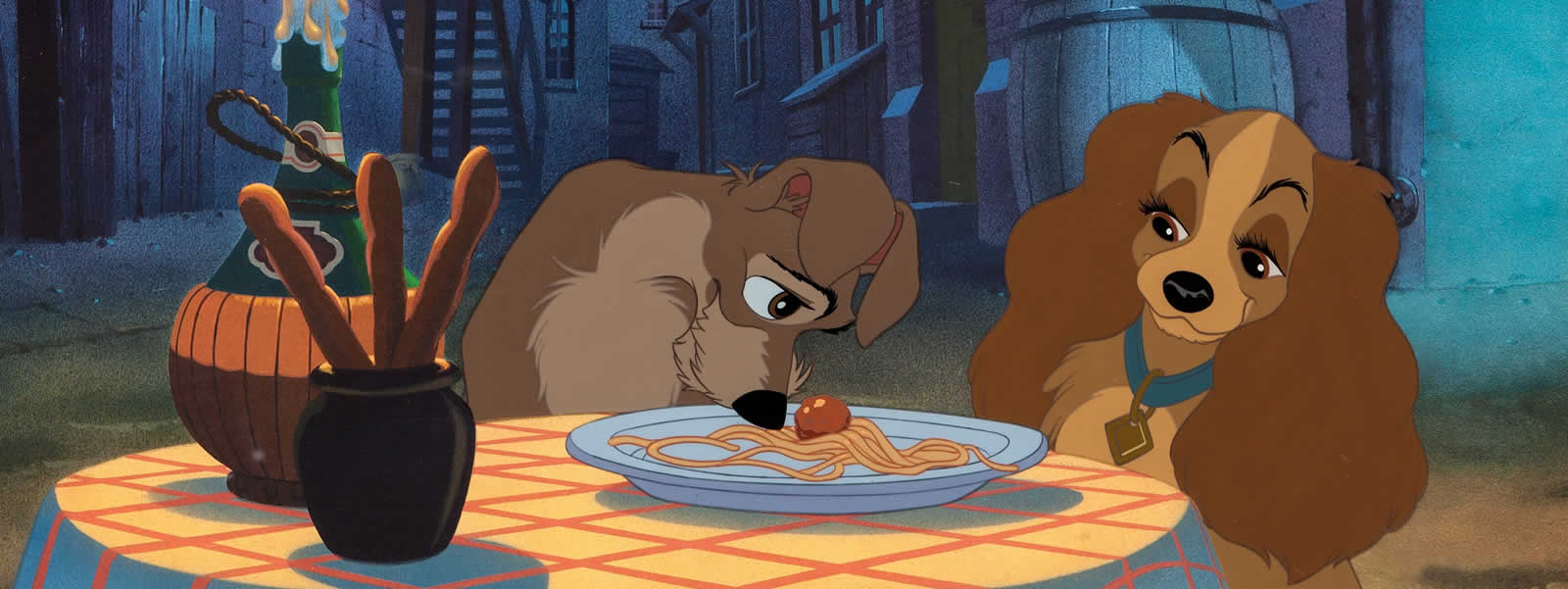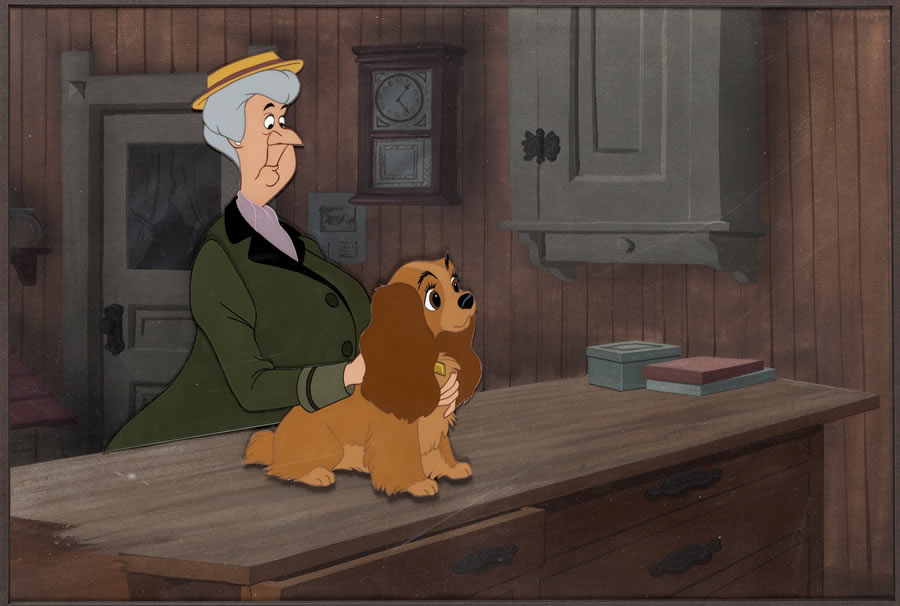DISNEY ARTIST WILLIE ITO RECALLS HIS WORK ON ONE OF ANIMATION’S MOST ROMANTIC SCENES
By Hector Cantú
Lady and the Tramp’s most iconic scene almost didn’t happen.
Walt Disney, the story goes, was not convinced the scene where the movie’s main characters share a plate of spaghetti and meatballs would work. He wanted the dogs to have human emotions, but he didn’t believe a plate of spaghetti was the way to go, says Willie Ito, who worked on the film.
Featuring the Art of Lady and the Tramp
June 15 – 16, 2019
Live: Dallas
Online: HA.com/7207a
INQUIRIES
Jim Lentz
214.409.1991
JimL@HA.com
“[Directing animator] Frank Thomas wanted to prove the scene would work,” Ito says, “so without even the benefit of a layout, he took it on his own to animate that scene and show it to Walt. Walt said, ‘Wow, it does work!’ And so it ended up in the picture.”
And the rest, as they say, is history.
Enlarge

The story is among the fond memories of Ito, who was hired in 1954 to work on Disney’s 15th animated feature film.
One of the largest collections of original Lady and the Tramp artwork ever offered is a highlight of Heritage’s June animation art auction. Included are one-of-a-kind production cels, concept art, hand-drawn storyboards, animation drawings and hand-painted production backgrounds.
“This film is one of the most beloved Disney animated feature films of all time,” says Jim Lentz, director of animation art at Heritage Auctions. “The characters of Lady, Tramp, Jock, Trusty, Peg and all the dogs in this film represent a great cast of canine stars.”
For Ito, the animated feature was his first professional job in Hollywood. He had moved from San Francisco to attend Chouinard Art Institute in Los Angeles. While there, he arranged an interview at Disney studios. “They said come on in for an interview and so I went, portfolio in hand,” says Ito, who as a Japanese-American, spent time in a World War II internment camp. “I was quite intimidated walking onto the Disney lot.”
Once there, Ito was introduced to animators Andy Engman and Iwao Takamoto. “They reviewed my portfolio and then a personnel manager said, ‘Thanks for coming in. Don’t call us, we’ll call you.’”
About two weeks later, Ito received a Western Union telegram. “Back in the 1950s,” Ito says, “a Western Union telegram could only mean one of two things: good news or bad news. And being away from home, I was thinking the worst.”
Instead, Disney asked him to return to the office for an animation test, “drawing a bunch of Disney characters. They gave me model sheets to follow. Cinderella. Alice. Donald. Goofy. When I was done, they said, ‘Congrats, you’re hired.’ I thought, ‘Oh, my gosh!’ That was the last thing I expected to hear. And they said, ‘We’re going to start you in the Lady unit.’”
Ito knew nothing of the film. “So I thought, ‘Well, the ink and paint department is nothing but ladies. That might be the entry level that I would have to start, painting cels and inking and all that. I had no idea that a film called Lady and the Tramp was in production. And so when I went to this office, I knocked at the door and sitting there were [animators] Milt Kahl and Iwao Takamoto.” Ito was assigned to be Takamoto’s assistant as an in-betweener, drawing frames between key scenes. “I went to my drawing board,” Ito recalls, “and it happened to be a close-up of Lady and that was the iconic spaghetti scene.”
Sixty-five years later, of course, the Bella Notte scene is recognized around the world as one of animation’s most romantic scenes, and perhaps the most creative Hollywood kiss of all time. “Yes, it’s iconic,” says Ito, 84, who later worked at Warner Bros. Animation and Hanna-Barbera, “but back then, I never knew how important it would be in the future.”
Enlarge
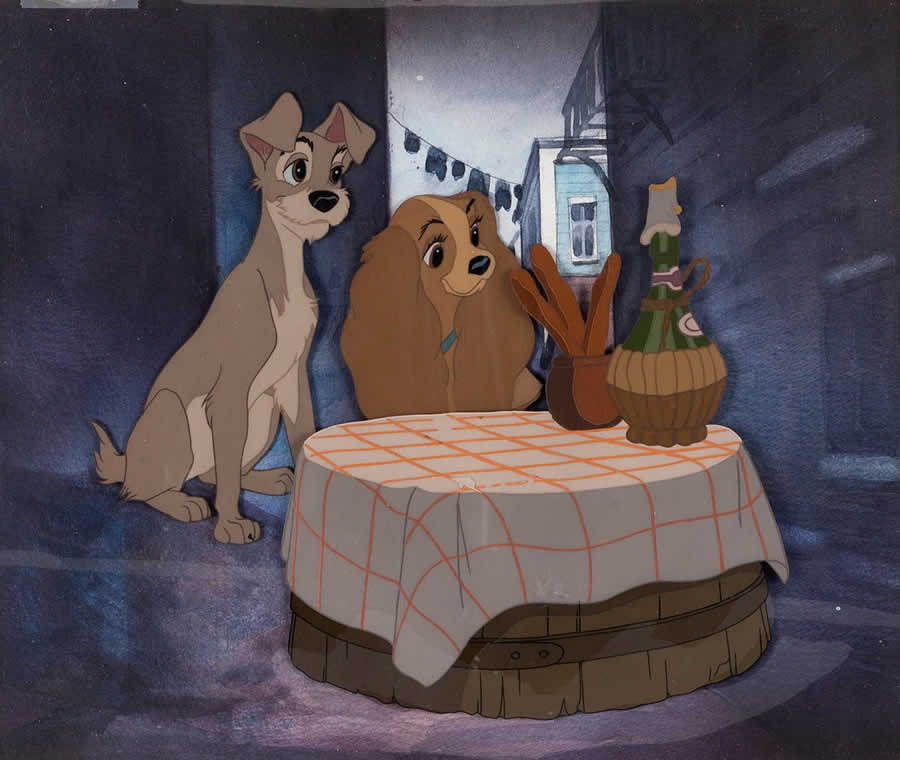
Walt Disney Studios
Original hand-inked, hand-painted production cel for Bella Notte scene
Estimate: $5,000-$7,500
Enlarge
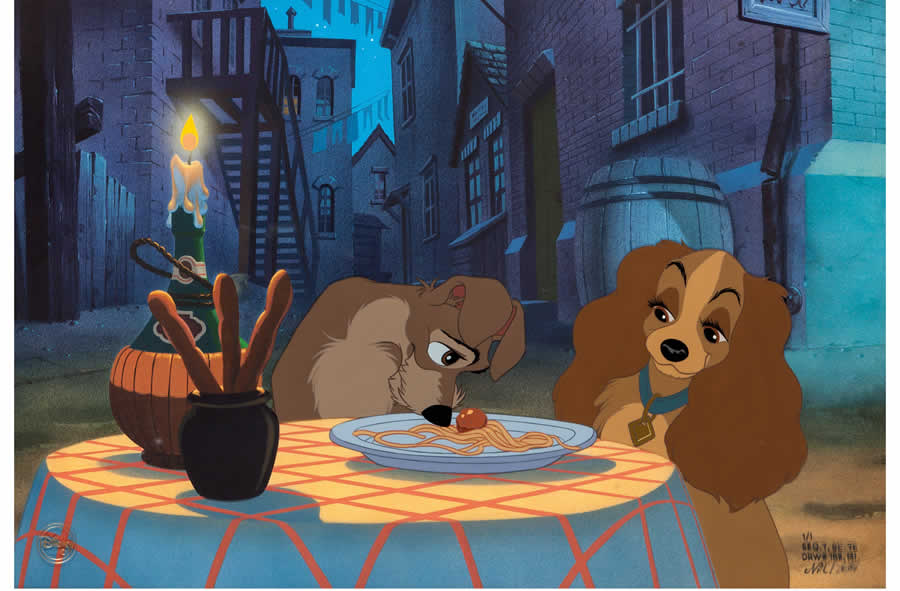
Walt Disney Studios
Original hand-inked, hand-painted “One of One – Bella Notte” cel created from original 1955 archived studio animation drawings
Estimate: $2,500-$3,500
Enlarge
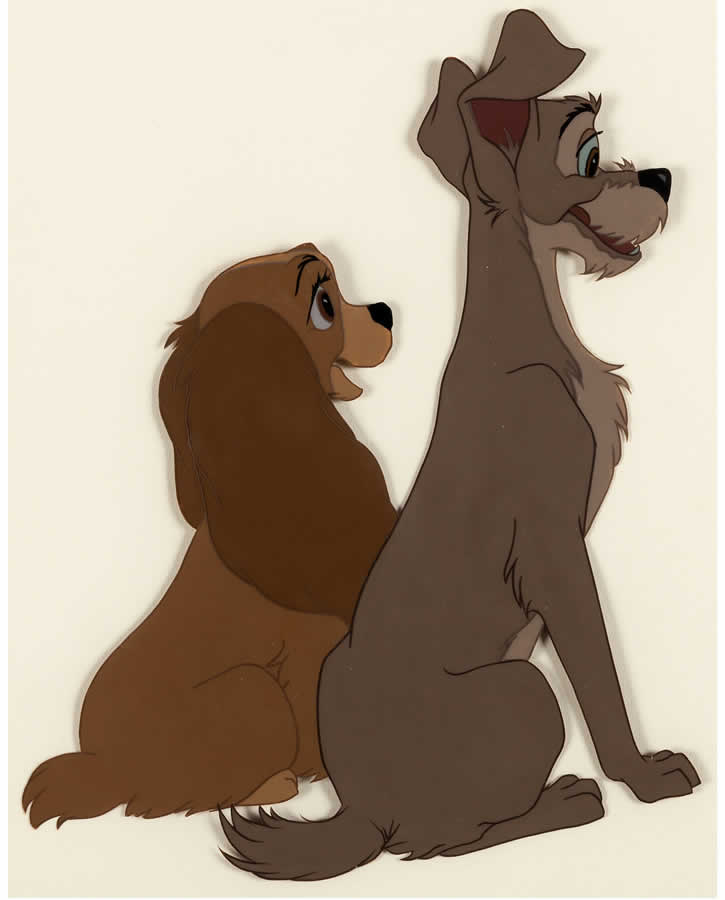
Walt Disney Studios
Original hand-inked, hand-painted production cel of both Lady and the Tramp
Estimate: $1,500-$2,500
Enlarge
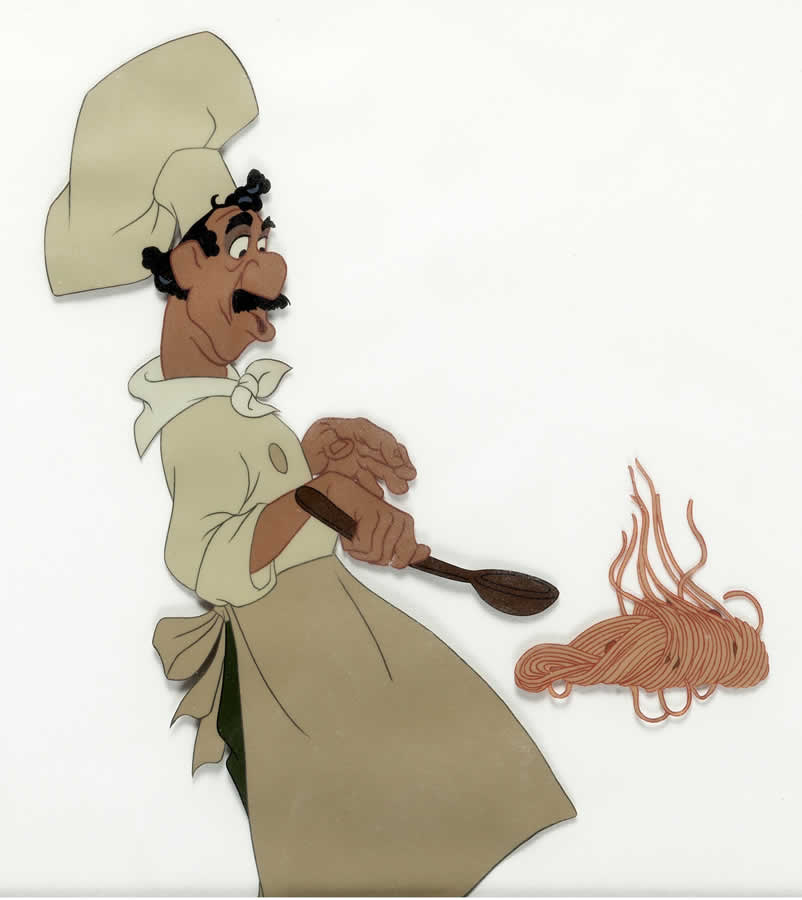
Walt Disney Studios
Original hand-inked, hand-painted production cel of Joe making the spaghetti for Bella Notte scene
Estimate: $1,000-$1,500
Enlarge
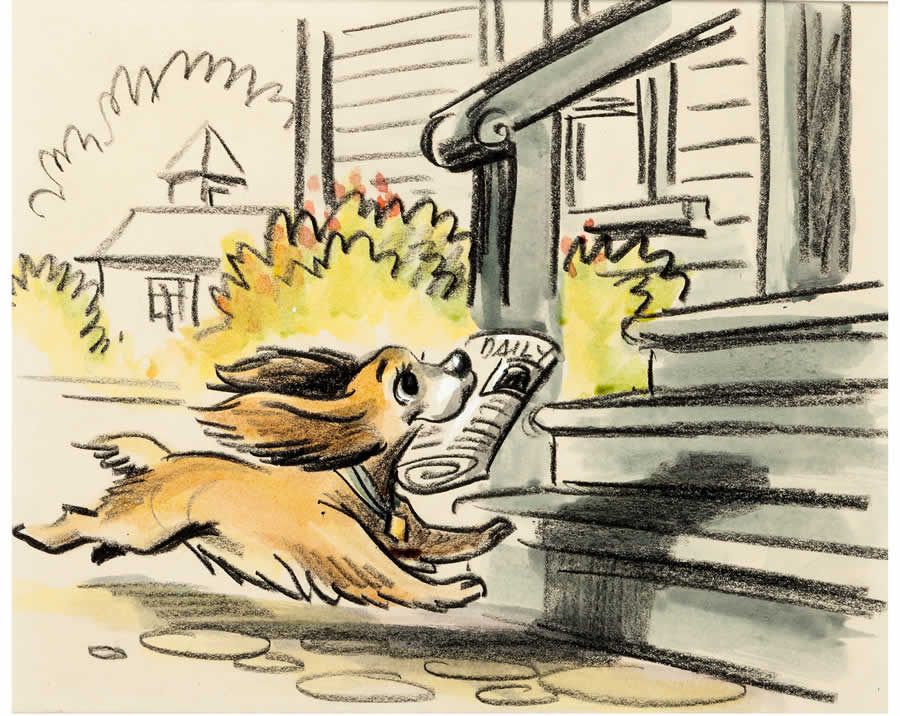
Walt Disney Studios
Rare original Walt Disney Studios concept artwork of Lady bringing in the family newspaper
Estimate: $750-$1,000
This article appears in the Spring/Summer 2019 edition of The Intelligent Collector magazine. Click here to subscribe to the print edition.

